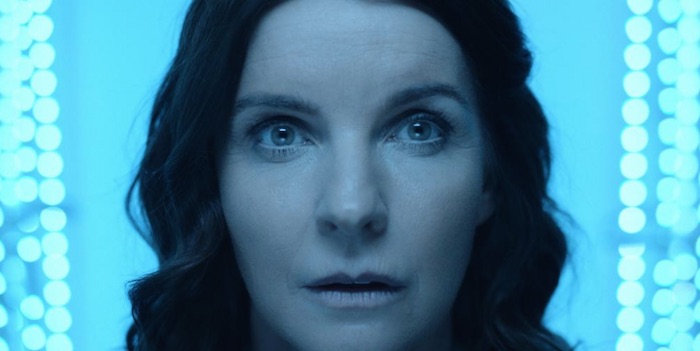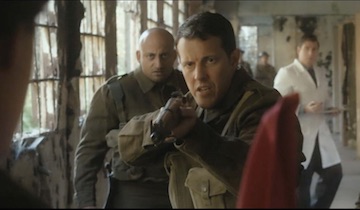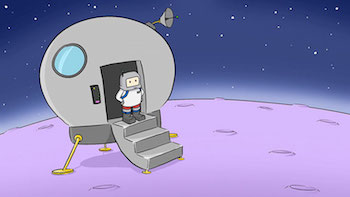APSA-NOMINATED ACTRESS HONOURS INDONESIAN HEROINE IN ATHIRAH
 Thursday, November 23, 2017 at 6:41AM
Thursday, November 23, 2017 at 6:41AM It became one of Indonesian film’s most sought-after leading parts – the role of Athirah Kulla, mother of the nation’s current Vice President Jusuf Kulla, in director Riri Riza’s adaptation of Albertine Indah’s period novel, ‘Hajja Athirah Kalla’. For Riza and producer Mira Lesmana, the actress who personified the strength, integrity and presence of the Makassar heroine would be Cut Mini, star of the director’s 2008 film Laskar Pelangi. As Athira, Mini proved a revelation; she took the Best Actress ‘Citra’ award in the film’s sweep of the 2016 Indonesian Film Festival. “I never even considered that I would come this far,” she told SCREEN-SPACE, who sat with the star in Brisbane on the eve of 2017 Asia Pacific Screen Awards, where she will vie for the Best Actress trophy….

“Athirah imparts a message of empowerment to Indonesian women, many of whom were faced with the same conditions, both then and now,” says the actress, whose ‘overnight success’ took 30 years, having graduated from model work to TV-soap stardom to her breakthrough role in the 2003 hit film, The Gathering. “She became the pride of the Makassar people,” says Mini. “Crossing boundaries in the way that she did was a landmark moment in our history.”
 The production lovingly recreated late 1950s Indonesia, a time when tradition and social mores dictated all facets of everyday life. Athirah Kalla is a well-to-do middle–class wife, committed to her husband Puanj Ajji (Arman Dewarti) and providing for a house full of children, including shy teenager Jusuf (Christoffer Nelwan). But when her husband strays, Athirah must raise the family in his long absences, while still striving to maintain the honour that society demands be shown to the patriarch. (Pictured, right; Cut Mini as Athira Kalla)
The production lovingly recreated late 1950s Indonesia, a time when tradition and social mores dictated all facets of everyday life. Athirah Kalla is a well-to-do middle–class wife, committed to her husband Puanj Ajji (Arman Dewarti) and providing for a house full of children, including shy teenager Jusuf (Christoffer Nelwan). But when her husband strays, Athirah must raise the family in his long absences, while still striving to maintain the honour that society demands be shown to the patriarch. (Pictured, right; Cut Mini as Athira Kalla)
“When cast, I had already read the book and had felt a deep emotional connection with the character," says Mini. "I felt what she was feeling, was sensing her journey. Then I practiced every day for two months to get the nuances of this character just right.” She worked closely with Riza to shape what would become an iconic portrayal of the legendary figure, though it was not achieved without great discipline. “The greatest obstacle for me was the silent stillness of her character, about how much of what she conveys is in her expressions. It was very hard for me to conceal the performance because I was feeling such strong emotions.”
 The actress adopted a method approach to her work that became so immersive it extended beyond her performance. “When I got onto the set, I considered everything mine,” she recalls. “The set for the house was my house, and the kids were my kids. The food that I cooked would be the food that Athirah would have cooked. Such moments stemmed from a desire and understanding within me.” She admits to feeling a sense of disconnect to her real self, a revelation not uncommon amongst actors who psychologically adopt another persona for a long shoot. “In truth, I felt that me and Athirah were one and I kind of forgot how to be ‘Mini’ for a while, so connected was I to her life.”
The actress adopted a method approach to her work that became so immersive it extended beyond her performance. “When I got onto the set, I considered everything mine,” she recalls. “The set for the house was my house, and the kids were my kids. The food that I cooked would be the food that Athirah would have cooked. Such moments stemmed from a desire and understanding within me.” She admits to feeling a sense of disconnect to her real self, a revelation not uncommon amongst actors who psychologically adopt another persona for a long shoot. “In truth, I felt that me and Athirah were one and I kind of forgot how to be ‘Mini’ for a while, so connected was I to her life.”
The all-encompassing characterisation impacted co-stars as well, not least of whom was the young but experienced actor Nelwan (pictured, above; with Mini, on set) with whom Mini has several emotionally potent scenes. “We had a particularly strong connection off-screen,” she admits, “They would never call me by my name, instead calling me ‘Mama’, for ‘mother’.” According to the actress, such devotion and belief is central to film’s message. “What the movie teaches us is how family, even in the face of all the struggles you have in life, is most important. We learn through Athirah that being a strong figurehead for your children is crucial,” she says.
Main photo: Tempo/Fakhri Hermansyah
 APSA,
APSA,  Athira,
Athira,  Biography,
Biography,  Cut Mini,
Cut Mini,  Indonesian Film
Indonesian Film 















